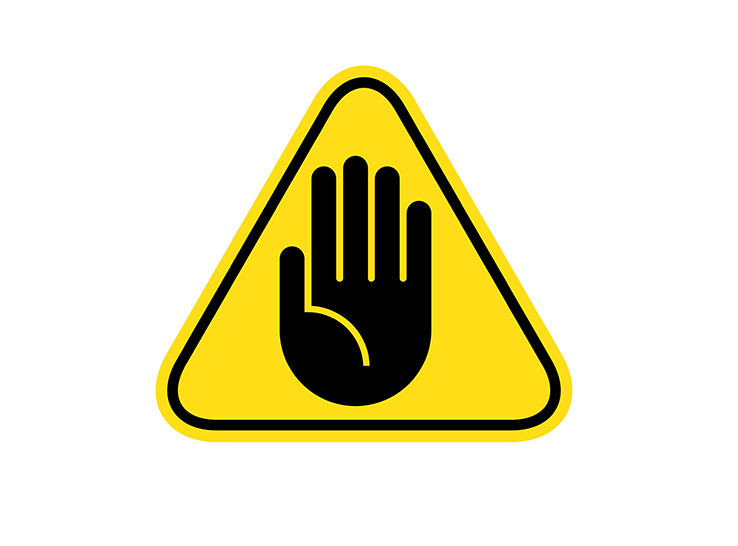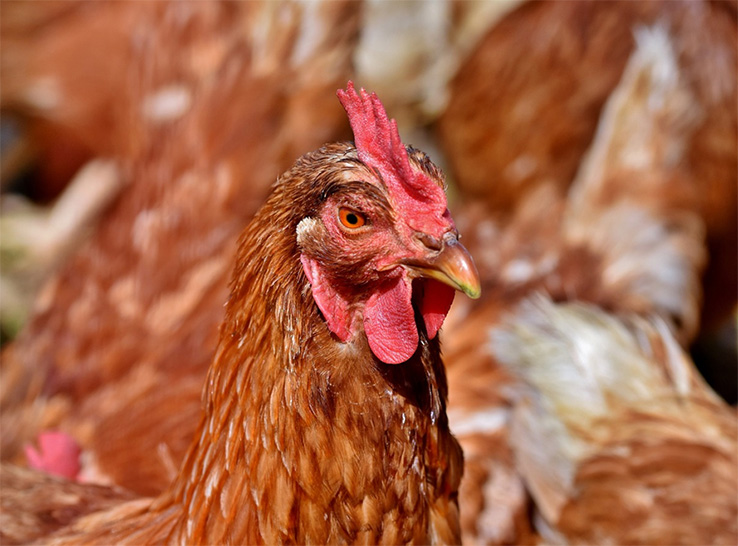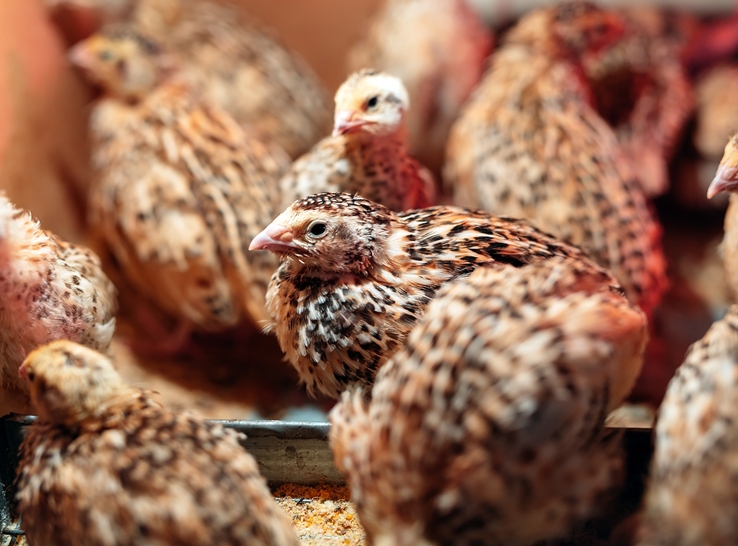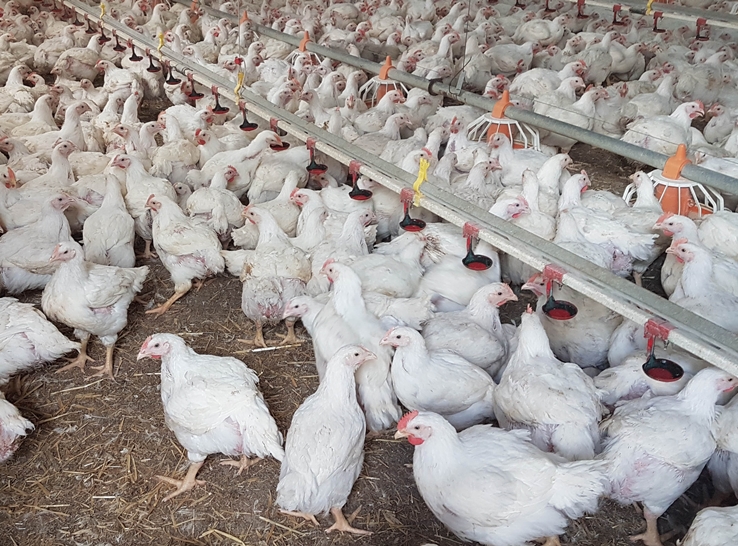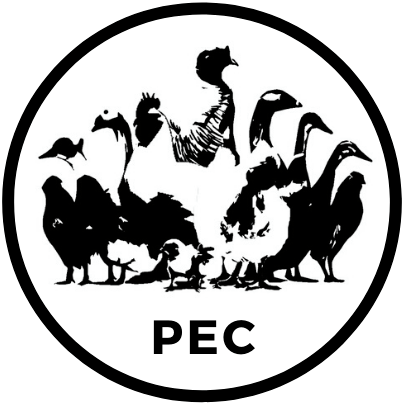By Gideon Ajibola and Marisa Erasmus, PhD, Purdue University
Damaging behaviors in poultry include feather pecking, vent pecking and toe pecking. While feather and vent pecking are well-known welfare problems in poultry that have received significant attention from researchers and farmers, toe pecking remains relatively unknown. Therefore, this article aims to shed light on toe pecking.
Development of toe pecking
The onset of damaging behaviors in poultry has been associated with health concerns. Toe pecking typically emerges in groups of birds at 20 to 30 weeks of age, peaking between 30 and 50 weeks. This pattern corresponds to transition periods to the layer barn following a rearing period in pullet barn and peak egg-laying, suggesting that TP development is associated with significant production stressors in a laying hen’s life.
Photo credit: Gideon Ajibola
Impacts of toe pecking on laying hen welfare
Increased fearfulness
Laying hens experiencing toe wounds resulting from toe pecks may be more fearful of higher areas in their housing environment, such as the top tiers of a cage-free aviary system. Research has demonstrated that toe pecking victims take less time to descend from elevated platforms. This could stem from the discomfort and pain associated with toe injuries, causing hens to be cautious of walking activities that require extensive balance and coordination.
Increased stress levels
Toe-pecked hens have enlarged stress-responsive organs, particularly the adrenal glands. An increase in the size of these organs leads to an increase in stress hormone production. This indicates heightened stress levels in toe-pecked hens, which is an attempt by their system to cope with stressful situations.
Increased susceptibility to infection and diseases
Toe-pecked hens have elevated stress levels, which compromises their immune system and makes them more susceptible to diseases. On the other hand, open wounds provide potential entry points for pathogens, and these wounds could be easily infected. The combination of stress and open wounds can predispose hens to infectious diseases.
Impaired mobility
Toe damage is associated with reduced mobility and inability to walk properly. Impaired mobility is a significant concern for hens raised in non-cage housing systems because important resources, such as food and water, are usually located in areas that require the hens to navigate complex three-dimensional (3D) spatial configurations. Therefore, the inability of TP victims to adequately navigate their environment and utilize these resources could severely impair their welfare.
Potential causes of toe pecking and strategies to prevent or minimize toe pecking
Factors |
Causes |
Prevention |
| Genetics | The genetic strain of layer birds has been identified as a risk factor. Lighter strains of birds are more susceptible to damaging and cannibalistic behaviors than heavier birds. Moreover, white-layer hens are more likely to develop TP and other damaging behaviors than other strains of layer hens. | Choosing the right layer strain is essential to minimize TP in layer flocks. Research suggests that brown strains may be less likely to develop TP. Nevertheless, before choosing a strain for egg production, producers should carefully consider the costs and benefits associated with each layer strain. |
| Light intensity | High light intensity and direct sunlight streaming into the barn have been implicated in stimulating pecking behavior. Aggressive pecking activities and damaging behaviors have been found to be higher in birds raised under high light intensity. Therefore, the intensity of lighting in the barn may influence TP. | Dimming the light is an effective intervention in preventing or reducing TP, but it is important to note that very low light intensities can be detrimental to hen health and welfare. Hence, if a flock develops TP, adjust the flock’s lighting program appropriately. |
| Nutrition | Dietary composition plays a role in the development of damaging behaviors in poultry as well. Broadly, diets deficient in specific amino acids (methionine and lysine) and minerals have been implicated in triggering cannibalistic behaviors in layer birds and may also be responsible for TP. | Nutrient requirements of laying hens change with age. Available evidence suggests that TP begins and intensifies with the onset of laying and egg-laying peaks. Therefore, the nutrient intake of layer hens during these phases should be critically monitored and implemented to avoid nutritional imbalances. |
| Housing environment | Environmental conditions can cause wounds, which attract attention and stimulate TP behavior. For example, the structure and design of the barn and equipment, and materials used within the barn, such as metal slats, have been suspected of causing toe wounds. Abrasive bedding can also lead to toe wounds, which then attracts pecking from birds | Ensure that the pullet and layer housing, as well as the equipment inside the barn, are designed to promote laying hens’ optimal toe and foot health. For example, consider using plastic slats instead of metal slats in cage-free systems to reduce the likelihood of toe wounds and injuries. Further, using non-abrasive bedding and enrichment materials can prevent the onset of TP problems. |
| Infection | Farms with a resurgence of bacterial infection, such as Escherichia coli, are more likely to have TP and other behavioral problems. | Practicing strict biosecurity procedures is beneficial for disease prevention and the overall behavioral health of the flock. |
| Stress | A high stress load on poultry has been linked to damaging behaviors. Although stress is environmentally induced in farm animals, their susceptibility to stress is influenced by their health status and immune system, and vice versa. | Potential stressors such as high or low temperature, overcrowding, poor handling, pollutants, and feed restriction should be minimized as much as possible. |
Summary
Toe pecking is an emerging welfare problem in laying hens housed in modern housing systems. Toe pecking may result in severe tissue damage and even death, leading to significant economic losses. In addition, birds receiving toe pecks may have elevated levels of fear and stress. Genetics, diet, lighting, toe wounds, health status, stress, and socialization have been proposed as factors associated with TP in layer flocks. A holistic approach that includes genetic, environmental, and management interventions is most likely to successfully prevent and alleviate TP in layer flocks, but more research will be valuable in providing solutions to this damaging behavior.
References
Butterworth, A., & Weeks, C. (2009). The Impact of Disease on Welfare. The Welfare of Domestic Fowl and Other Captive Birds, 9, 189–218. https://doi.org/10.1007/978-90-481-3650-6_8
Cloutier, S., Newberry, R. C., Honda, K., & Alldredge, J. R. (2002). Cannibalistic behaviour spread by social learning. Animal Behaviour, 63(6), 1153–1162. https://doi.org/10.1006/anbe.2002.3017
Coria-Avila, G. A., Pfaus, J. G., Orihuela, A., Domínguez-Oliva, A., José-Pérez, N., Hernández, L. A., & Mota-Rojas, D. (2022). The Neurobiology of Behavior and Its Applicability for Animal Welfare: A Review. Animals : An Open Access Journal from MDPI, 12(7), 928. https://doi.org/10.3390/ani12070928
De Haas, E. N., Newberry, R. C., Edgar, J., Riber, A. B., Estevez, I., Ferrante, V., Hernandez, C. E., Kjaer, J. B., Ozkan, S., Dimitrov, I., Rodenburg, T. B., & Janczak, A. M. (2021). Prenatal and Early Postnatal Behavioural Programming in Laying Hens, With Possible Implications for the Development of Injurious Pecking. Frontiers in Veterinary Science, 8. https://www.frontiersin.org/articles/10.3389/fvets.2021.678500
Dennis, R. L. (2016). Adrenergic and noradrenergic regulation of poultry behavior and production. Domestic Animal Endocrinology, 56, S94–S100. https://doi.org/10.1016/j.domaniend.2016.02.007
Gebhardt-Henrich, S. G., Mueller, S., Zanini, L., & Toscano, M. J. (2023). A survey about the welfare problem “toe pecking” in Swiss laying hens. Applied Animal Behaviour Science, 259, 105854. https://doi.org/10.1016/j.applanim.2023.105854
Kjaer, J. B., & Bessei, W. (2013). The interrelationships of nutrition and feather pecking in the domestic fowl.
Krause, E. T., Petow, S., & Kjaer, J. (2011). A note on the physiological and behavioural consequences of cannibalistic toe pecking in laying hens (Gallus gallus domesticus). Archiv Fur Geflugelkunde, 75, 140–143.
Light of Evolution. Brain, Behavior and Evolution, 95(6). https://doi.org/10.1159/000516787
Marchewka, J., Sztandarski, P., Zdanowska-Sąsiadek, Ż., Damaziak, K., Wojciechowski, F., Riber, A. B., & Gunnarsson, S. (2020). Associations between welfare and ranging profile in free-range commercial and heritage meat-purpose chickens (Gallus gallus domesticus). Poultry Science, 99(9), 4141–4152. https://doi.org/10.1016/j.psj.2020.05.044
Mehlhorn, J., & Caspers, S. (2021). The Effects of Domestication on the Brain and Behavior of the Chicken in the Light of Evolution. Brain Behavior and Evolution, 95(6), 287–301. https://doi.org/10.1159/000516787
Meyer, B., Bessei, W., Vahjen, W., Zentek, J., & Harlander-Matauschek, A. (2012). Dietary inclusion of feathers affects intestinal microbiota and microbial metabolites in growing Leghorn-type chickens. Poultry Science, 91(7), 1506–1513. https://doi.org/10.3382/ps.2011-01786
Michel, V., Berk, J., Bozakova, N., van der Eijk, J., Estevez, I., Mircheva, T., Relic, R., Rodenburg, T. B., Sossidou, E. N., & Guinebretière, M. (2022). The Relationships between Damaging Behaviours and Health in Laying Hens. Animals : An Open Access Journal from MDPI, 12(8), 986. https://doi.org/10.3390/ani12080986
Rørvang, M. V., Hinrichsen, L. K., & Riber, A. B. (2019). Welfare of layers housed in small furnished cages on Danish commercial farms: The condition of keel bone, feet, plumage and skin. British Poultry Science, 60(1), 1–7. https://doi.org/10.1080/00071668.2018.1533632
Savory, C. J. (1995). Feather pecking and cannibalism. World’s Poultry Science Journal, 51(2), 215–219. https://doi.org/10.1079/WPS19950016
van der Eijk, J. A. J., Rodenburg, T. B., de Vries, H., Kjaer, J. B., Smidt, H., Naguib, M., Kemp, B., & Lammers, A. (2020). Early-life microbiota transplantation affects behavioural responses, serotonin and immune characteristics in chicken lines divergently selected on feather pecking. Scientific Reports, 10(1), Article 1. https://doi.org/10.1038/s41598-020-59125-w
To view the full Poultry Extension Collaborative newsletter, Vol 48, click here.
Editor’s note: Content on Modern Poultry’s Industry Insights pages is provided and/or commissioned by our sponsors, who assume full responsibility for its accuracy and compliance.

